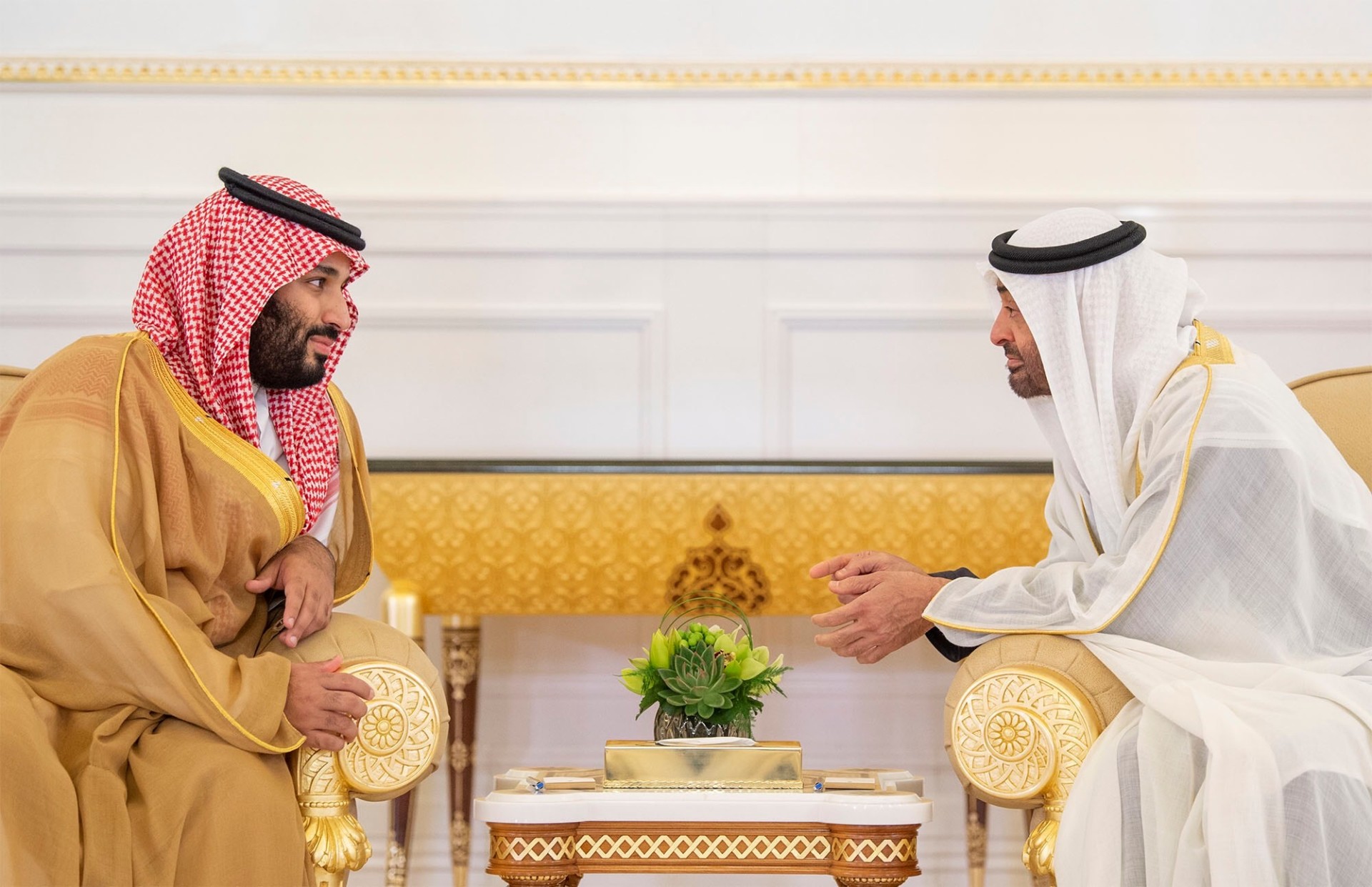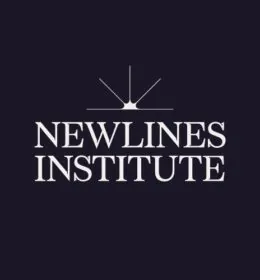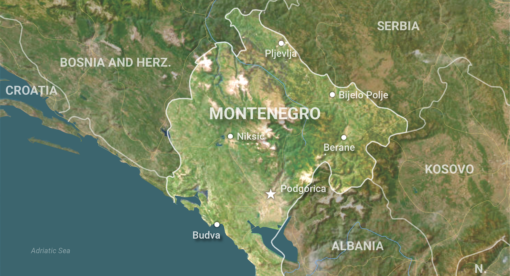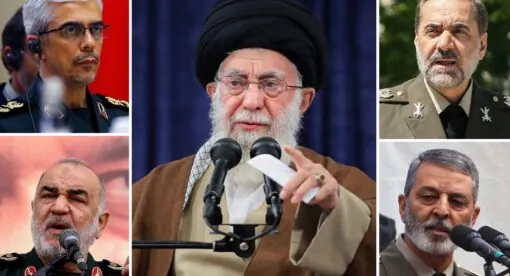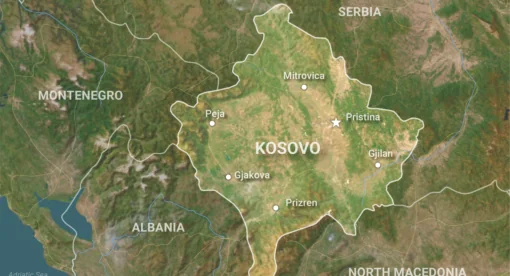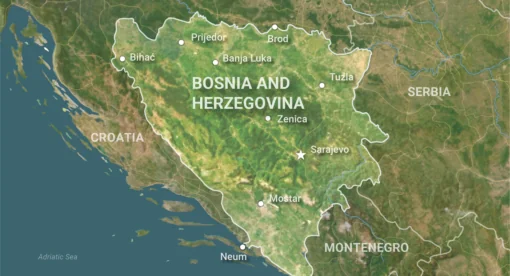Saudi Arabia and the United Arab Emirates have historically boasted close ties, but as the two countries simultaneously attempt to diversify their economies away from hydrocarbons, the countries will increasingly be in competition for limited resources in sectors such as tourism and defense.
Saudi Arabia’s and the United Arab Emirates’ diverging regional interests appear poised to be reinforced by increasing economic competition, a split that, if adroitly managed by the United States, can be used as leverage to improve human rights, and manage Saudi and Emirati regional behavior. As their post-oil economic models increasingly overlap, the countries will find themselves in a race for tourists, investment dollars, and high-quality laborers.
Saudi Arabia announced Feb. 16 that companies would soon risk losing access to lucrative Saudi government contracts if they did not relocate their regional headquarters to Saudi Arabia itself — a move that could be interpreted as an attempt to undercut the UAE’s dominance as the business hub of the Gulf Cooperation Council (GCC). Whether that policy ends up being so draconian remains to be seen, given the likely pushback from companies long in the UAE, but what is increasingly clear is that in a region racing toward a post-hydrocarbon future, the UAE and Saudi Arabia’s overlapping diversification schemes are assured to bring about more economic competition.
Strategically, the Saudis and Emiratis have much in common. They both worry about the development of Iran’s nuclear program and Tehran’s regional influence, with both sides exposed to potential Iranian attack and the United Arab Emirates hosting a large Iranian diaspora whose loyalty has in the past been questioned by Emirati authorities. They are both seeking to escape the shackles of rentier economics into a post-hydrocarbon future before the global market makes oil unprofitable. They are dominated by powerful royal personalities — Crown Prince Mohammed bin Salman in Saudi Arabia and Crown Prince Mohammed bin Zayed in Abu Dhabi — who both agree that regional reform does not include political liberalization. These commonalities have propelled a close relationship both between the two rulers — the Emirati crown prince has been a mentor to his younger Saudi counterpart — and their countries’ foreign policies.
The countries do not fully align on all regional priorities. The Saudis and Emiratis have diverged on Yemen policy as the UAE pulls away from military and diplomatic exposure to the conflict – leaving Riyadh to manage the fallout. The Emiratis have been bolder in Libya, backing warlord Khalifa Haftar, while the Saudis have largely sat the conflict out. And even on Qatar, the Saudis were quicker to push for a resolution to the blockade than the UAE in early 2021. Moreover, the UAE has shown disquieting signs of regional leadership that undercut Riyadh’s typically leading role. Abu Dhabi led the charge into normalization with Israel and as a result remains the best-positioned Gulf government to receive the advanced F-35 from the United States. The tight coordination that appeared in 2016-2017 after the ascension of Crown Prince Mohammed bin Salman has weakened.
Moreover, their simultaneous scramble to build post-oil economies is increasingly bringing the two countries into competition. One of the most immediate competitive venues is tourism, particularly the non-Hajj sector, where medium- and high-income tourists seek beaches, resorts, and Arabian adventure. While Dubai, the heart of the UAE’s tourist industry, is currently light years ahead of Saudi Arabia, the nature of both Dubai’s brand and tourism in general means that Saudi Arabia will have a chance to catch up and even steal away the mantle of tourist powerhouse. Dubai’s high-end luxury brand prizes its modernity and technological edge, but some of its earliest tourist mega-projects, like the Burj al-Arab, completed in 2000, are already appearing stylistically dated, requiring major innovations and updates to restore their luster that will likely necessitate outside financing. The UAE is also steadily introducing taxes like VAT, which while currently refundable nevertheless drive up the base costs of visiting the UAE, undermining the sticker price competitiveness of the emirate. These types of taxes are only set to grow as the UAE modernizes its finances, driving up the cost of tourism, particularly in cash-strapped Dubai, which exhausted its oil reserves decades ago. That said, the VAT tax is still very low compared to other places and a cost of doing business for foreigners who seek to avoid the restricted lifestyle in the Saudi kingdom.
With the luster of the UAE’s tourist industry poised to fade, Saudi Arabia may move aggressively into the regional space, trying to lure tourists away from the Emirates and toward its own brand of luxury tourism. Jeddah Tower, due to be the world’s tallest if finished — the project has been on hold since 2018 in part because of fallout from the 2017 Saudi purge — is squarely aimed at taking eyes off the current record holder, the Burj Khalifa in Dubai. Numerous Red Sea resorts, malls throughout the country’s urban centers, and recreational activities are being built that are strikingly similar to existing amenities in the UAE. Qiddiya, the entertainment mega-center to be built in Riyadh, will, if fully completed, have water parks, golf courses, roller coasters, and other amenities that could undercut the edge of the UAE’s own entertainment centers. Unlike Dubai, Saudi Arabia’s still-flush sovereign wealth fund and willingness to dip into its Public Investment Fund means it can both invest in long-shot infrastructure and subsidize ventures to compete on price against the Emirates.
Saudi Arabia also has natural advantages the UAE cannot compete with. Saudi Arabia’s hajj tourism is already deeply developed, with millions coming from both within Saudi Arabia and abroad to visit the holy cities of Mecca and Medina. Its long history sitting on major trade routes has left a historical legacy the UAE lacks; ancient Al Ula, built in the first century, for example, rivals Jordan’s Petra in tourist potential.
Investment dollars are another competitive angle, particularly as investors weigh similar projects in both countries. Here the UAE has an institutional advantage, with business-friendly regulations pushing it high on the World Bank’s 2020 Ease of Doing Business rankings to 16th globally. Saudi Arabia, on the other hand, was 62nd, as its regulations, legal system, and credit facilities lagged. Even so, the Saudis are making rapid strides: in 2018, they were ranked 92nd. New legal reforms and regulatory changes are rapidly making it easier to start up a business in the kingdom, and with the political will of the crown prince behind Vision 2030, more reforms are likely. That will likely close the gap between investment climates for the two, and with so much overlap in their tourist and diversification strategies, investors will weigh the comparative benefits of one country over the other.
To compete, Saudi Arabia will likely enact policies that will incidentally undercut the UAE, like its headquarters announcement, as it chases similar industries. But the UAE is unlikely to stand still: It too will reform its investment climate to further compete, seeking a comparative advantage over Saudi Arabia to maintain its own post-oil development strategy, while a potential boon in Israel-UAE economic ties will include transport, energy, defense, and financial deals that are still out of reach for Saudi Arabia.
They will also compete in the defense sector, with Saudi Arabian Military Industries (SAMI) taking on the UAE’s own Emirates Defense Industries Company (EDIC) — but Riyadh, short of its own normalization process, will lack the UAE’s access to advanced Israeli military technologies.
Additionally, as Saudi Arabia reforms its economy, it will need highly skilled foreign workers to plug the gaps in its labor market as its own native Saudis go through retraining and its education system slowly reforms. Sectoral overlap in development plans will again play a role here: Highly skilled scientists, technicians, business people, and investors will be sought after by both countries, with the two seeking to provide strong enough incentives to attract the talent they need. Both sides have already issued specialized visas to try to bring in highly skilled workers, and the UAE has even gone so far as to offer the prospect of citizenship — a rare commodity in the GCC — to encourage top talent to make the emirates their full-time home.
Reforms to the labor market are one thing, but so too is lifestyle, with expatriates seeking the freewheeling social norms of Dubai, something Saudi Arabia is now actively chasing through social reforms designed to reduce the power of the long-standing Wahhabi religious establishment. In this competition toward a Gulf Arab form of social liberalism, the UAE’s smaller population and less complicated political scene offer it an advantage, but Saudi Arabia may try to offset its disadvantage through greater monetary incentives such as exempting certain workers from taxes or licensing fees or by using more strong-arm tactics to undermine businesses based in the UAE to convince them to relocate workers to Saudi Arabia.
This economic competition, overlaid with other strategic divergences, will add to a loosening of ties between Abu Dhabi and Riyadh. They are already adjusting to the post-Trump Middle East in which their risk profiles for U.S. pressure are different (the UAE, for example, does not have the same level of congressional focus on its human rights record, nor has its intervention in Libya created as many political waves in the United States as Saudi Arabia’s Yemen military operations). But now they will also find ways to undercut one another’s development plans during the post-pandemic global recovery.
This economic competition will also make both more sensitive to diplomatic and economic sentiment surrounding their national policies. In the immediate term, the United States is most likely to emerge as a threat to this sentiment, with criticism of their respective human rights records, especially Saudi Arabia’s, likely to spook investors and businesses and drive them in the direction of whichever country appears least likely to incur sanctions. At the moment, that is Saudi Arabia, but the UAE’s own human rights record and regional activities in Yemen and Libya have also drawn U.S. ire. Aggressive regional behavior by either country will also have an effect: Should the UAE, for example, consider overtly pressuring its GCC rival Qatar to hew closer to Abu Dhabi’s regional policies on political Islam, it will face backlash from the United States that could benefit Saudi Arabia.
Both countries will need a greater sense of stability across the Persian Gulf with Iran, as investors worry that either country’s policies could inflame tensions and ratchet up the possibilities of Iranian retaliation striking targets in Saudi Arabia or the UAE, undermining their hawkishness toward Iran. Moreover, while both countries will continue to diversify their relations with China, Chinese economic ties are likely to shift in the direction of whichever country appears poised to be more economically successful, shifting with sentiment rather than trying to strategically alter it to offset pressure on either country.
While the deep bonds that underpin Saudi-Emirati ties will remain, competition over limited investment dollars, workers, tourists, and business deals will alter their relationship. In this competitive space, not only will they try to lure business away from one another, but they may even be tempted to repeat the kinds of public relations and economic campaigns they have taken against other, more overt rivals in the region, like Qatar and Oman.
Ryan Bohl is a geopolitical thinker, educator, and writer. He currently serves as a senior analyst for the Middle East at Stratfor, a private intelligence forecasting firm, where he specializes in Gulf economic and political developments. His work has appeared in Time Magazine, Al-Arabiya News, Al-Jazeera, Salon Magazine, World Politics Review, The Atlantic Sentinel, and other outlets.
The views expressed in this article are those of the author and not an official policy or position of the Newlines Institute.

